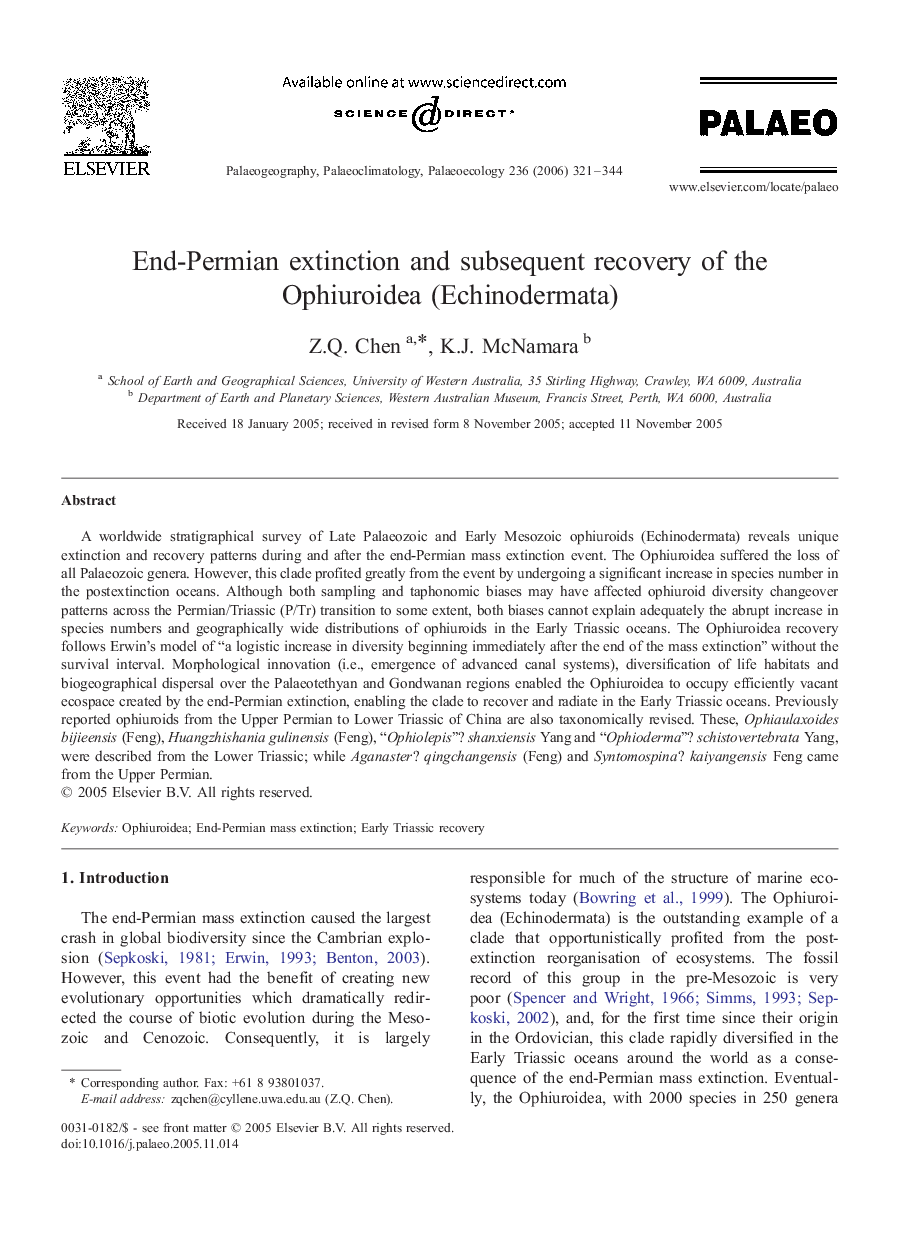| Article ID | Journal | Published Year | Pages | File Type |
|---|---|---|---|---|
| 4469474 | Palaeogeography, Palaeoclimatology, Palaeoecology | 2006 | 24 Pages |
A worldwide stratigraphical survey of Late Palaeozoic and Early Mesozoic ophiuroids (Echinodermata) reveals unique extinction and recovery patterns during and after the end-Permian mass extinction event. The Ophiuroidea suffered the loss of all Palaeozoic genera. However, this clade profited greatly from the event by undergoing a significant increase in species number in the postextinction oceans. Although both sampling and taphonomic biases may have affected ophiuroid diversity changeover patterns across the Permian/Triassic (P/Tr) transition to some extent, both biases cannot explain adequately the abrupt increase in species numbers and geographically wide distributions of ophiuroids in the Early Triassic oceans. The Ophiuroidea recovery follows Erwin's model of “a logistic increase in diversity beginning immediately after the end of the mass extinction” without the survival interval. Morphological innovation (i.e., emergence of advanced canal systems), diversification of life habitats and biogeographical dispersal over the Palaeotethyan and Gondwanan regions enabled the Ophiuroidea to occupy efficiently vacant ecospace created by the end-Permian extinction, enabling the clade to recover and radiate in the Early Triassic oceans. Previously reported ophiuroids from the Upper Permian to Lower Triassic of China are also taxonomically revised. These, Ophiaulaxoides bijieensis (Feng), Huangzhishania gulinensis (Feng), “Ophiolepis”? shanxiensis Yang and “Ophioderma”? schistovertebrata Yang, were described from the Lower Triassic; while Aganaster? qingchangensis (Feng) and Syntomospina? kaiyangensis Feng came from the Upper Permian.
